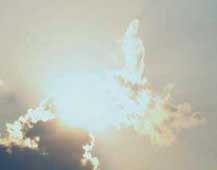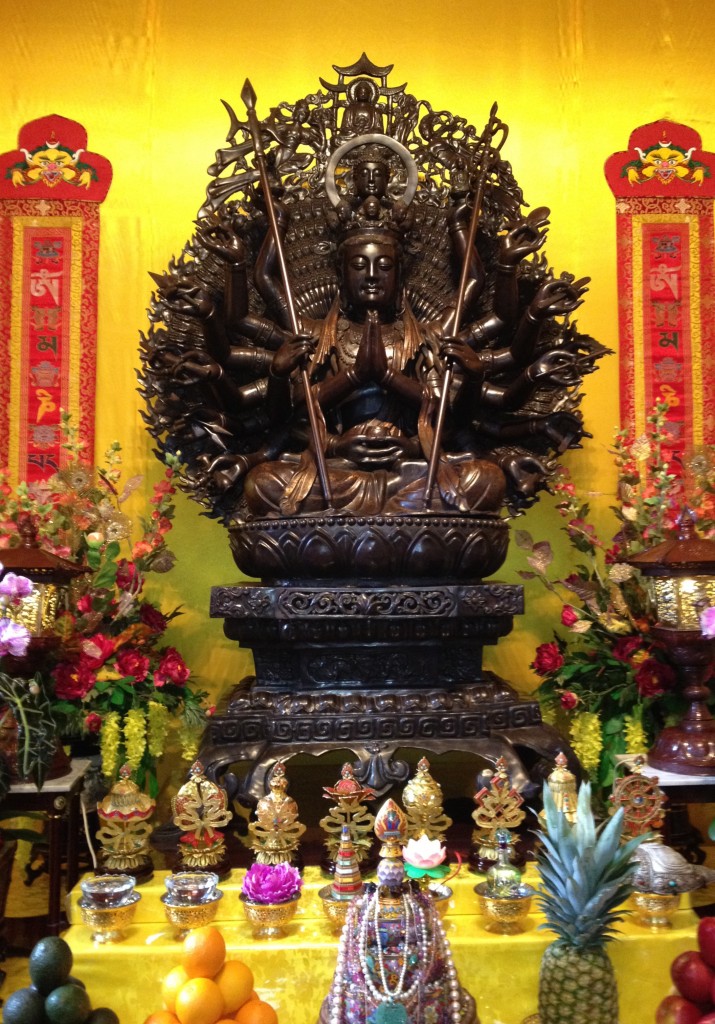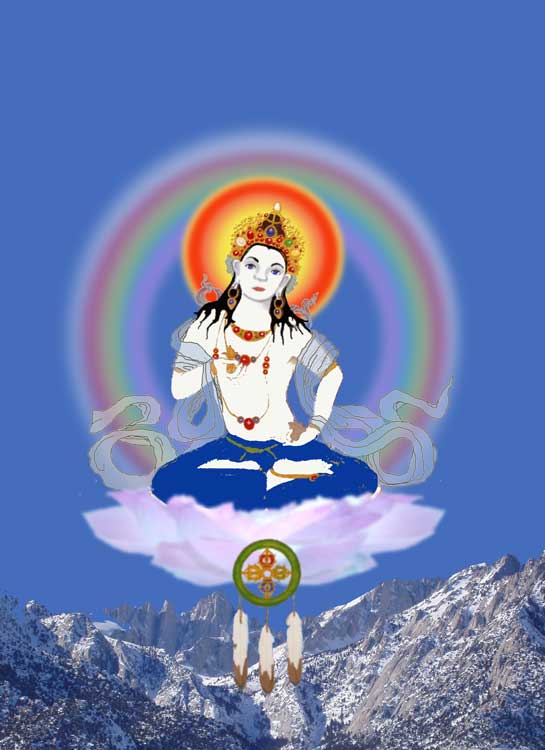
On October 2, 2004, Henghsing Gyatso and those accompanying him made their way to the Tanwen seaside village in the town of Zaoqiao in Miaoli County. Suddenly, a white light flashed in the sky several times. Then, in an instant, Kuan Yin Bodhisattva appeared in the sky. She was wearing pure white clothes and her sleeves floated in the air. She stood on a colorful cloud and her feet were supported below by a white lotus flower. She moved directly toward the lama. She looked extremely dignified and solemn.
A Bodhisattva is literally an enlightenment being. In mahayana Buddhism, a Bodhisattva is a being who seeks buddhahood through the systematic practice of perfecting the paramitas but who renounces complete entry into nirvana until all beings are saved. A Bodhisattva is above the level of an Arhat or Lohan. Everything that Bodhisattvas do is for the benefit of sentient beings.
The six paramitas are also known as the six perfections, six perfect virtues, or six transcendent perfections. They are generosity (dana); moral discipline (sila); patience (ksanti); energy, vitality, diligence, or effort (virya); concentration (dhyana and samadhi); and wisdom (prajna). These represent the fundamental practices of mahayana Buddhism. They are the virtues perfected by a Bodhisattva in the course of his or her development. The exoteric or open mahayana path is also called the paramita path or bodhisattvayana, and usually takes eons to complete. The vajrayana or secret path of the mahayana, sometimes referred to as tantrayana, can result in much quicker results. However, no matter what particular school of vajrayana Buddhism one may belong to, one must still constantly practice the six paramitas, and develop one’s bodhichitta as is done on the open path, along with the esoteric practices.
The principle samboghakaya Bodhisattvas who help us in our practice include Vajrasattva Mahasattva; Avalokiteshvara Bodhisattva (Kuan Shi Yin Pu-sa or Chenrezi), the Bodhisattva of Compassion; Manjushri Bodhisattva (Wen Shu Pu-sa), the Bodhisattva of Wisdom; Samantabhadra Bodhisattva (Pu Xian Pu-sa), also called Universal Kindness or Great Conduct Bodhisattva because of His ten great vows; Skanda Bodhisattva (Wei tuo Pu-sa or Chana Dorje), a wrathful emanation of Vajrapani Bodhisattva and a protector of the Dharma; Mahasthamaprapta Bodhisattva (Da Shi Zhi Pu-sa), the Bodhisattva of Great Strength or Skillful Means, a peaceful emanation of Vajrapani Bodhisattva; Kshitigarbha Bodhisattva (Di Zang Pu-sa), Guardian of the Earth Bodhisattva who vowed to save those in hell; Lord Yama, the Bodhisattva assigned by the Buddhas to rule the ghosts and hell realms; and Mara, the evil-one who is actually a Bodhisattva who tests living beings on the path to buddhahood. Many of these great Bodhisattvas are actually ancient Buddhas who have assumed the form of Bodhisattvas to help living beings. Great Bodhisattvas are also known as Mahasattvas.
There are also many Bodhisattvas who have taken nirmanakaya form and incarnated in this world to help living beings. Some of the most well known historical Bodhisattvas in ancient India were Nagajuna, Aryadeva, Asvaghosa, Asangha, Chandrakirti, Dharmakirti, Dignaga, Shantideva, and Vasubandhu. In Tibet there were Master Padmasambhava, Master Tangtong Gyalpo, Master Marpa, Master Tsongkapha, Master Atisha, and Master Milarepa. In China there were the Bodhisattva masters Bodhidharma, the Tian-Tai Trio, and Hui Neng and others. Current incarnations of great Bodhisattvas and Buddhas are discussed in H.H. Dorje Chang Buddha III and elsewhere on this website.


